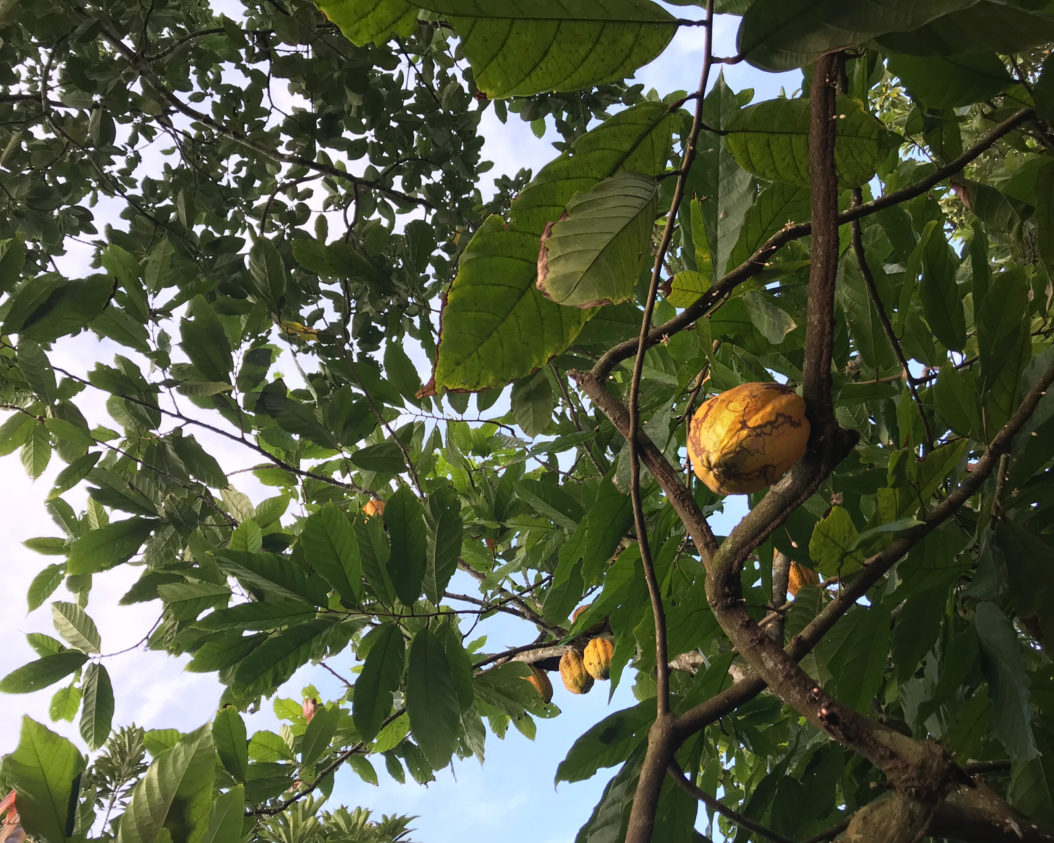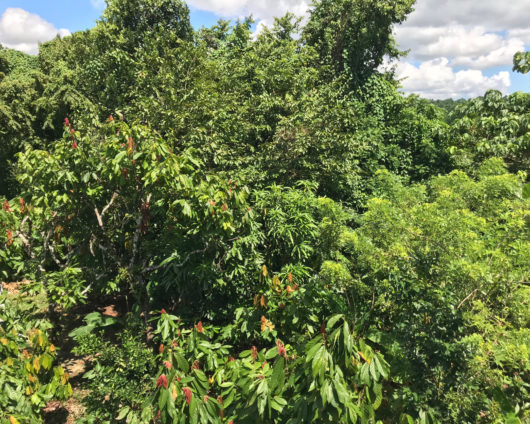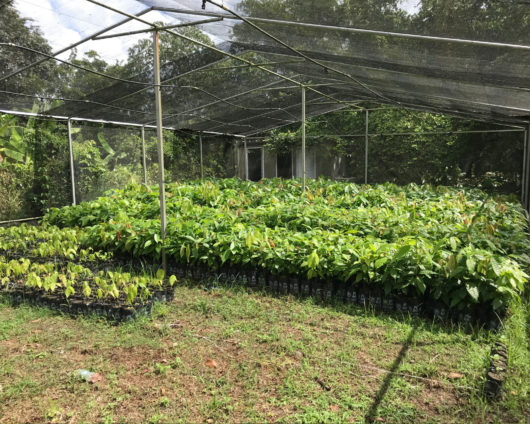The cocoa tree
A tropical diva
From-tree-to-bar, part 1
Text:
Katharina Kuhlmann
Photography:
EcoFinia GmbH |
Alexander Kuhlmann
19 Juli 2018

We love chocolate! But where does it come from, what’s behind all this and how is he cocoa fruit transformed into chocolate and cocoa? We want to answer these and other questions in this new, comprehensive 4-part magazine special “From tree to bar”. We want to start with the cocoa tree – where does it grow, what are its characteristics? In the next part we want to deal with the cocoa fruit – what does it look like, what can you do with it? Part three covers the cocoa bean and it’s processing on its way to chocolate. The fourth part answers the question what happens to the cocoa beans when the doors of the chocolate factory close behind it. It’s a series with a lot of information and new insights to the world of chocolate.
The cocoa tree – a tropical beauty

Chocolate doesn’t grow on trees, but the main ingredient of chocolate, the favourite treat of many people, grows there. Cocoa beans – how could it be otherwise – come from the cocoa tree. This tropical tree belongs to the mallow family and is known under the scientific name “Theobroma cacao L.”. The L. stands for the Swedish botanist and scientist Carl von Linné, who studied the cocoa tree and also gave it its name “Theobroma cacao”. This name derives from Greek and can be translated as “Cacao, food of the gods” and goes back to the historical origin of the tree that was worshipped by the Aztec, Maya and other peoples in Middle and South America and cultivated quite early.
The appearance of the cocoa tree is unique and pretty exotic. It is a tropical understory plant with a thin, only 20 cm thick trunk, growing to up to 10 to 15 m in height. Many plantations shorten the trees to 2 to 4 m in height to allow for an easier harvest of the fruits. The leaves are big and long (up to 35 cm), smooth and look like those of a rubber tree. The cocoa tree reveals its true beauty in its blooms and fruits. Both grow directly on the stem and are very colourful. This phenomenon is called cauliflory and lets the full grown cocoa trees shine with up to 100.000 blooms in many colours every year. The small blooms have a yellowish-white or reddish colour and regenerate over the whole year. This is also the reason why blooms and fruits can be seen at the same time.
The fascinating blooms are only surpassed by the big, colourful cocoa fruits that can show any imaginable shades from yellow and red to purple. All details on the fruit, its harvest and the possible uses can be found on the second part of our “From-tree-to-bar” special.
The cocoa tree – a tropical diva
Experts consider the Theobroma cacao a plant diva. As soon as the cultivation conditions aren’t perfect plantation owners have to expect a bad harvest or make use of chemicals (the latter is out of question for us). There’s a wide variety of influence factors. Cultivation is only possible in tropical regions, ideally located around 10° northern and southern latitude. Cocoa trees don’t bear fruits from 23° northern and southern latitude. Another important factor are the temperatures, they shouldn’t be below 16 °C and over 35 °C. Precipitation should be constant and has to be at least 100 mm a month. Great drought causes withering of the fruits. Finally, the cocoa tree only grows in a maximum altitude of 1.000 metres in equatorial areas.

The cocoa tree is a shade plant and needs special sun protection. This is achieved by planting shadow plants. In this case the cocoa trees can’t be planted as densely as in monocultures and trees like bananas or oil palms are used to achieve additional yields. This type of plantation usually used by small farmers makes the cocoa trees lees prone to diseases and removes the need for pesticides. This plantation type is the perfect solution for the organic production of cocoa which compensates the farmers’ lower yields by a higher cocoa price. The further development of this cultivation type is the agroforestry system that integrates different shadow trees and other agricultural crop and terrestrial plants into the cocoa farming and optimises the total yield for the farmers.
Monocultures are a big problem. In large plantations, mostly in Africa and Asia, cocoa trees are densely planted which helps pests and diseases to spread quickly. Chemicals and fertilisers have to be used to kill pests and to condition the soil. This has a negative impact on the environment, people and animals in the surrounding. To optimise yields monocultures usually lack shade trees. Instead, nets are used that additionally keep animals away. Monocultures usually lack mosquitos which pollinate the blooms so the human hand is needed to do this. Naturally, only 5 % of all blooms produce ripe fruits – that would result in an average of 20 to 30 fruits, with a maximum of 50 to 60.
A cocoa tree needs many years before it delivers its first yields. The first blooms show up after 2 to 3 years, the first yield usually takes 5 to 6 years. After 25 years the yield of a cocoa tree declines and has to be replaced by new young trees.
The cocoa tree – a tropical export hit
Cocoa trees have many different subspecies, in the course of history thousands of varieties emerged. The origin of the cocoa tree is assumed to be in Middle and South America, scientists still argue about the precise region of origin. One this is for sure: the cocoa tree can be divided into three main varieties, the Criollo, the Forastero and the Trinitario. The Criollo grows in Middle and South America, is called fine cocoa and is used as a basis for fine, aromatic chocolate with a high percentage of cocoa. This variety is quite delicate and only delivers low yields. Its global market share is about 10 %. Forastero is known as a cheap “consumer cocoa” and usually comes from West Africa. The taste is more bitter and serves for the production of milk chocolate and cocoa powder. Its global market share is about 70 %. As a hybrid of both varieties Trinitario unites their positive characteristics: strong but delicate taste and low vulnerability. Trinitario is represented on the world market with about 20 %.